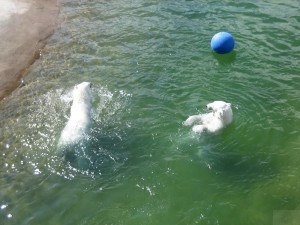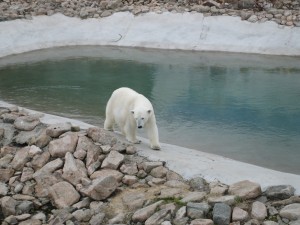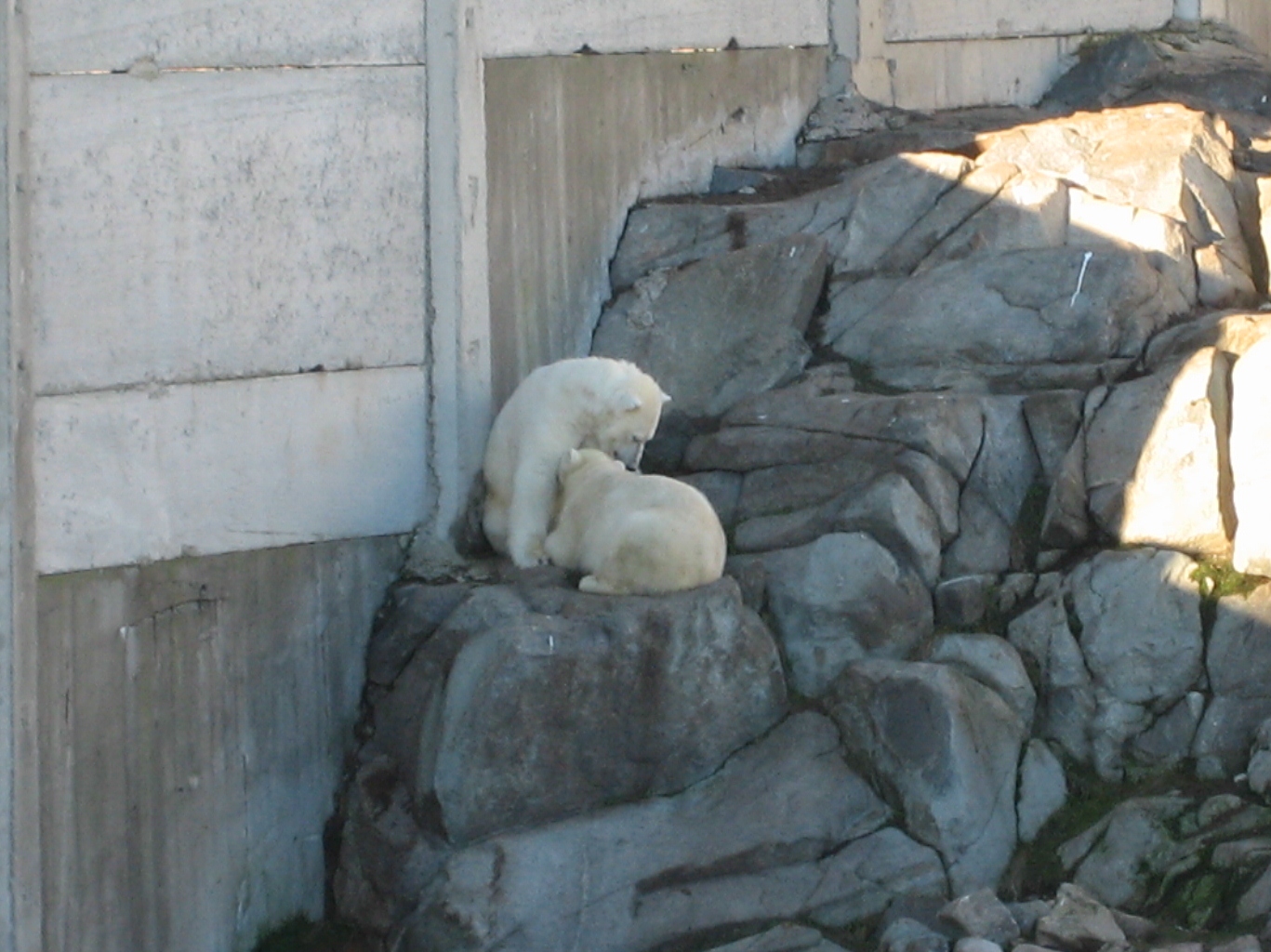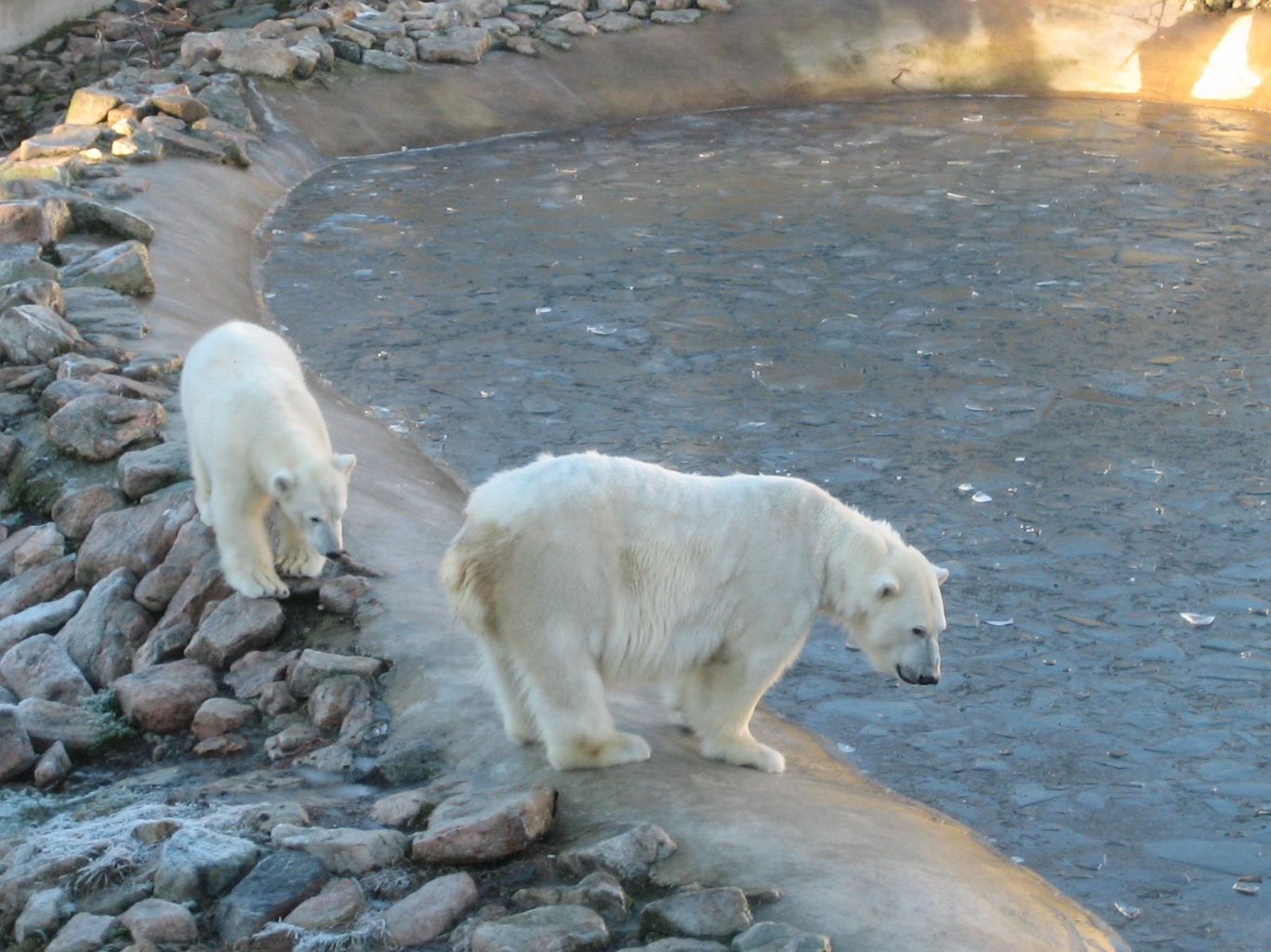The first 24 hours after the birth are the most critical: one-third of the cubs die during this period. Half of the cubs die before they reach the age of five days, and after a month, only 40% of the cubs born are still surviving. In the earlier times, perhaps the greatest reason for the weakened reproduction for polar bears at various wildlife parks has been the amount of outer stimulus disturbing the mother polar bear, this disturbance eventually could cause the mother to abandon its cub or even kill the cub. At the Ranua Wildlife Park, therefore, they made early protection improvements in the polar bear den and the surroundings to offer peace for Venus to give birth to her cubs. During the time of the pregnancy and also after the cub was born, they followed the progress through microphone recordings and surveillance video cameras installed in the den.
On February 23rd, 2012, the park decided to open the door to the den and let the polar bear mother and her cub out in the snowy world of their fence. The mother bear Venus had started to move around anxiously in the den as a sign that she probably would need some nutrition. She had not had anything to eat for nearly three months. A lot of journalists were attending this remarkable happening when the door was opened. First the mother bear came out and had a look at the weather outside and tested how secure it would be for the cub to enter, too. After a while even the little cub very carefully looked out from between the fore legs of the mother. At this time the park could announce that the cub was a male bear. His weight as this time was around 10 kg.
I went to Ranua zoo in March to try to get a glimpse of the cub. I was lucky, because I got the chance to see him. The mother and her cub very seldom came out from the den and not at any predictable time. The fence is very big and the visitors never got near the cub when he was only a few months old. Later on he started to move around in the fence and they were eventually even moved to another, bigger fence. The picture I captured in March 2012 shows the mother standing outside the den and the cub is to the right of her. Not a good photo, I admit, but better than nothing…
There was a name competition arranged to find a suitable name for the little newborn cub. Around 10,000 suggestions were given and on September 3rd, 2012, as the result of the very careful and difficult elimination of the suggestions done by the jury consisting of the Ranua Wildlife Park staff, the name Ranzo was elected as the name for the very unique polar bear cub in Finland. The jury wanted the name to be suggestive of the birth-place of the cub, (the Wildlife Park of Ranua, Ranua Zoo) and, at the same time, the name needed to be internationally ”easy” as well.
The next time I visited the Ranua zoo was in October 2012 and Ranzo was already a “big” boy, around 80 kg. Both the mother and the cub were sleeping as I arrived, but after a while Ranzo started to wake up and strolled over to his mother to have some milk from his mother. The mother bear was still breast feeding the cub and right out there in the sun shine in front of some visitors.
After the meal Ranzo started to play around with the ice flakes on the little lake they have in their fence. They use to go swimming a lot, but at the time I was there they stayed on the shore and Ranzo was running around to find interesting things to play with. The staff of Ranua zoo provides the bears with different play toys, so he usually does not have any problems to find anything to do.
I have visited the Ranua wildlife park several times during the seven winters I have been in Lapland, and before Ranzo was born Venus used to play around together with her sister Vanessa in the pool to amuse the visitors. The two of them always enjoyed the audience to looked up at them as they threw around balls in the pool. Vanessa was moved to another zoo somewhere in Europe as Venus had her cub, because there are not enough fences to keep all of them The father Manasse is also living in his own fence in the zoo. He is not allowed to be with the mother and the cub, because a male polar bear does not have “fatherly” feelings and he could be dangerous to the cub and even kill it. In a couple of years there are plans to let Venus and Manasse have a try for more cubs, but at the moment Ranzo can enjoy the company of his mother Venus. Ranua wildlife park keeps a blog on happenings in the park, but mostly only in Finnish. Check it out here.
These photos are of Venus and Vanessa playing in spring 2008. 

In Ranua Wildlife Park there are also a lot of other arctic animals. I will tell you more about them later on. Ranua Wildlife Park offers tourists and nearby inhabitants the opportunity to see arctic animals throughout the year, in an as authentic environment for the animals as possible. The Park is open every day of the year, and the changing seasons do bring their own extra dimension to the life in the park. During winter the brown bears are sleeping, of course, but there are a lot of animals active in winter time. Often they are even more active during the winter because the heat in the summer makes them slow and sleepy during the visitors’ hours. Check out the home page of the wildlife park for the special feeding times.
The park animals consist of about 50 wild animal species and 200 individuals. In the summer, there is also a domestic animal park in the park grounds.



